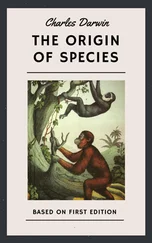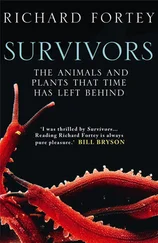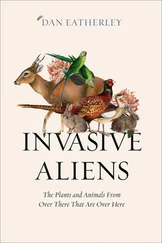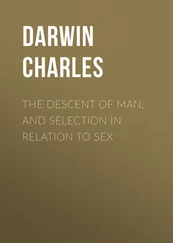Charles Darwin - The Variation of Animals and Plants under Domestication — Volume 1
Здесь есть возможность читать онлайн «Charles Darwin - The Variation of Animals and Plants under Domestication — Volume 1» — ознакомительный отрывок электронной книги совершенно бесплатно, а после прочтения отрывка купить полную версию. В некоторых случаях можно слушать аудио, скачать через торрент в формате fb2 и присутствует краткое содержание. Жанр: foreign_antique, foreign_prose, на английском языке. Описание произведения, (предисловие) а так же отзывы посетителей доступны на портале библиотеки ЛибКат.
- Название:The Variation of Animals and Plants under Domestication — Volume 1
- Автор:
- Жанр:
- Год:неизвестен
- ISBN:нет данных
- Рейтинг книги:5 / 5. Голосов: 1
-
Избранное:Добавить в избранное
- Отзывы:
-
Ваша оценка:
- 100
- 1
- 2
- 3
- 4
- 5
The Variation of Animals and Plants under Domestication — Volume 1: краткое содержание, описание и аннотация
Предлагаем к чтению аннотацию, описание, краткое содержание или предисловие (зависит от того, что написал сам автор книги «The Variation of Animals and Plants under Domestication — Volume 1»). Если вы не нашли необходимую информацию о книге — напишите в комментариях, мы постараемся отыскать её.
The Variation of Animals and Plants under Domestication — Volume 1 — читать онлайн ознакомительный отрывок
Ниже представлен текст книги, разбитый по страницам. Система сохранения места последней прочитанной страницы, позволяет с удобством читать онлайн бесплатно книгу «The Variation of Animals and Plants under Domestication — Volume 1», без необходимости каждый раз заново искать на чём Вы остановились. Поставьте закладку, и сможете в любой момент перейти на страницу, на которой закончили чтение.
Интервал:
Закладка:
There is another and closely allied difficulty consequent on the doctrine of the descent of our domestic dogs from several wild species, namely, that they do not seem to be perfectly fertile with their supposed parents. But the experiment has not been quite fairly tried; the Hungarian dog, for instance, which in external appearance so closely resembles the European wolf, ought to be crossed with this wolf: and the pariah dogs of India with Indian wolves and jackals; and so in other cases. That the sterility is very slight between certain dogs and wolves and other Canidae is shown by savages taking the trouble to cross them. Buffon got four successive generations from the wolf and dog, and the mongrels were perfectly fertile together. (1/48. M. Broca has shown ('Journal de Physiologie' tome 2 page 353) that Buffon's experiments have been often misrepresented. Broca has collected (pages 390-395) many facts on the fertility of crossed dogs, wolves, and jackals.) But more lately M. Flourens states positively as the result of his numerous experiments that hybrids from the wolf and dog, crossed inter se, become sterile at the third generation, and those from the jackal and dog at the fourth generation. (1/49. 'De la Longevite Humaine' par M. Flourens 1855 page 143. Mr. Blyth says ('Indian Sporting Review' volume 2 page 137) that he has seen in India several hybrids from the pariah-dog and jackal; and between one of these hybrids and a terrier. The experiments of Hunter on the jackal are well-known. See also Isid. Geoffroy St. — Hilaire, 'Hist. Nat. Gen.' tome 3 page 217, who speaks of the hybrid offspring of the jackal as perfectly fertile for three generations.) But these animals were closely confined; and many wild animals, as we shall see in a future chapter, are rendered by confinement in some degree or even utterly sterile. The Dingo, which breeds freely in Australia with our imported dogs, would not breed though repeatedly crossed in the Jardin des Plantes. (1/50. On authority of F. Cuvier quoted in Bronn's 'Geschichte der Natur' b. 2 s. 164.) Some hounds from Central Africa, brought home by Major Denham, never bred in the Town of London (1/51. W.C.L. Martin 'History of the Dog' 1845 page 203. Mr. Philip P. King, after ample opportunities of observation, informs me that the Dingo and European dogs often cross in Australia.); and a similar tendency to sterility might be transmitted to the hybrid offspring of a wild animal. Moreover, it appears that in M. Flourens' experiments the hybrids were closely bred in and in for three or four generations; and this circumstance would most certainly increase the tendency to sterility. Several years ago I saw confined in the Zoological Gardens of London a female hybrid from an English dog and jackal, which even in this the first generation was so sterile that, as I was assured by her keeper, she did not fully exhibit her proper periods; but this case was certainly exceptional, as numerous instances have occurred of fertile hybrids from these two animals. In almost all experiments on the crossing of animals there are so many causes of doubt, that it is extremely difficult to come to any positive conclusion. It would, however, appear, that those who believe that our dogs are descended from several species will have not only to admit that their offspring after a long course of domestication generally lose all tendency to sterility when crossed together; but that between certain breeds of dogs and some of their supposed aboriginal parents a certain degree of sterility has been retained or possibly even acquired.
Notwithstanding the difficulties in regard to fertility given in the last two paragraphs, when we reflect on the inherent improbability of man having domesticated throughout the world one single species alone of so widely distributed, so easily tamed, and so useful a group as the Canidae; when we reflect on the extreme antiquity of the different breeds; and especially when we reflect on the close similarity, both in external structure and habits, between the domestic dogs of various countries and the wild species still inhabiting these same countries, the balance of evidence is strongly in favour of the multiple origin of our dogs.
DIFFERENCES BETWEEN THE SEVERAL BREEDS OF THE DOG.
If the several breeds have descended from several wild stocks, their difference can obviously in part be explained by that of their parent species. For instance, the form of the greyhound may be partly accounted for by descent from some such animal as the slim Abyssinian Canis simensis (1/52. Ruppel 'Neue Wirbelthiere von Abyssinien' 1835-40 'Mammif.' s. 39 pl. 14. There is a specimen of this fine animal in the British Museum.), with its elongated muzzle; that of the larger dogs from the larger wolves, and the smaller and slighter dogs from the jackals: and thus perhaps we may account for certain constitutional and climatal differences. But it would be a great error to suppose that there has not been in addition (1/53. Even Pallas admits this; see 'Act. Acad. St. Petersburgh' 1780 page 93.) a large amount of variation. The intercrossing of the several aboriginal wild stocks, and of the subsequently formed races, has probably increased the total number of breeds, and, as we shall presently see, has greatly modified some of them. But we cannot explain by crossing the origin of such extreme forms as thoroughbred greyhounds, bloodhounds, bulldogs, Blenheim spaniels, terriers, pugs, etc., unless we believe that forms equally or more strongly characterised in these different respects once existed in nature. But hardly any one has been bold enough to suppose that such unnatural forms ever did or could exist in a wild state. When compared with all known members of the family of Canidae they betray a distinct and abnormal origin. No instance is on record of such dogs as bloodhounds, spaniels, true greyhounds having been kept by savages: they are the product of long-continued civilisation.
[The number of breeds and sub-breeds of the dog is great; Youatt for instance, describes twelve kinds of greyhounds. I will not attempt to enumerate or describe the varieties, for we cannot discriminate how much of their difference is due to variation, and how much to descent from different aboriginal stocks. But it may be worth while briefly to mention some points. Commencing with the skull, Cuvier has admitted (1/54. Quoted by I. Geoffroy 'Hist. Nat. Gen.' tome 3 page 453.) that in form the differences are "plus fortes que celles d'aucunes especes sauvages d'un meme genre naturel." The proportions of the different bones; the curvature of the lower jaw, the position of the condyles with respect to the plane of the teeth (on which F. Cuvier founded his classification), and in mastiffs the shape of its posterior branch; the shape of the zygomatic arch, and of the temporal fossae; the position of the occiput — all vary considerably. (1/55. F. Cuvier in 'Annales du Museum' tome 18 page 337; Godron 'De l'Espece' tome 1 page 342; and Col. H. Smith in 'Nat. Library' volume 9 page 101. See also some observations on the degeneracy of the skull in certain breeds, by Prof. Bianconi 'La Theorie Darwinienne' 1874 page 279.) The difference in size between the brains of dogs belonging to large and small breeds "is something prodigious." "Some dogs' brains are high and rounded, while others are low, long, and narrow in front." In the latter, "the olfactory lobes are visible for about half their extent, when the brain is seen from above, but they are wholly concealed by the hemispheres in other breeds." (1/56. Dr. Burt Wilder 'American Assoc. Advancement of Science' 1873 pages 236, 239.) The dog has properly six pairs of molar teeth in the upper jaw, and seven in the lower; but several naturalists have seen not rarely an additional pair in the upper jaw (1/57. Isid. Geoffroy Saint-Hilaire 'Hist. des Anomalies' 1832 tome 1 page 660, Gervais 'Hist. Nat. des Mammiferes' tome 2 1855 page 66. De Blainville ('Osteographie, Canidae' page 137) has also seen an extra molar on both sides.); and Professor Gervais says that there are dogs "qui ont sept paires de dents superieures et huit inferieures." De Blainville (1/58. 'Osteographie, Canidae' page 137.) has given full particulars on the frequency of these deviations in the number of the teeth, and has shown that it is not always the same tooth which is supernumerary. In short- muzzled races, according to H. Muller (1/59. Wurzburger 'Medecin. Zeitschrift' 1860 b. 1 s. 265.), the molar teeth stand obliquely, whilst in long-muzzled races they are placed longitudinally, with open spaces between them. The naked, so-called Egyptian or Turkish dog is extremely deficient in its teeth (1/60. Mr. Yarrell in 'Proc. Zoological Soc.' October 8, 1833. Mr. Waterhouse showed me a skull of one of these dogs, which had only a single molar on each side and some imperfect incisors.), — sometimes having none except one molar on each side; but this, though characteristic of the breed, must be considered as a monstrosity. M. Girard (1/61. Quoted in 'The Veterinary' London volume 8 page 415.), who seems to have attended closely to the subject, says that the period of the appearance of the permanent teeth differs in different dogs, being earlier in large dogs; thus the mastiff assumes its adult teeth in four or five months, whilst in the spaniel the period is sometimes more than seven or eight months. On the other hand small dogs are mature, and the females have arrived at the best age for breeding, when one year old, whereas large dogs "are still in their puppyhood at this time, and take fully twice as long to develop their proportions." (1/62. This is quoted from Stonehenge, a great authority, 'The Dog' 1867 page 187.)
Читать дальшеИнтервал:
Закладка:
Похожие книги на «The Variation of Animals and Plants under Domestication — Volume 1»
Представляем Вашему вниманию похожие книги на «The Variation of Animals and Plants under Domestication — Volume 1» списком для выбора. Мы отобрали схожую по названию и смыслу литературу в надежде предоставить читателям больше вариантов отыскать новые, интересные, ещё непрочитанные произведения.
Обсуждение, отзывы о книге «The Variation of Animals and Plants under Domestication — Volume 1» и просто собственные мнения читателей. Оставьте ваши комментарии, напишите, что Вы думаете о произведении, его смысле или главных героях. Укажите что конкретно понравилось, а что нет, и почему Вы так считаете.












